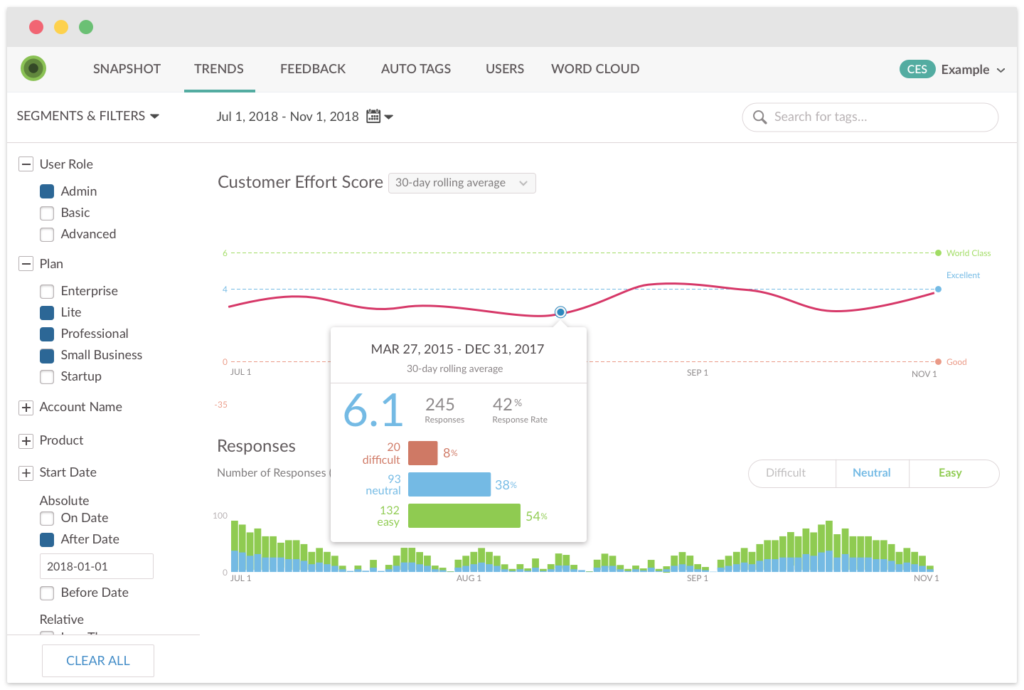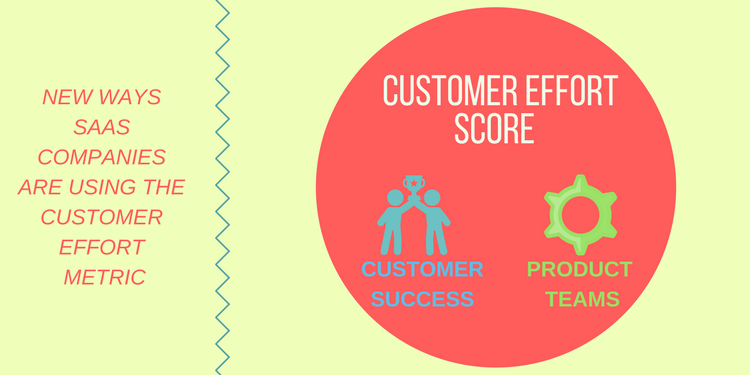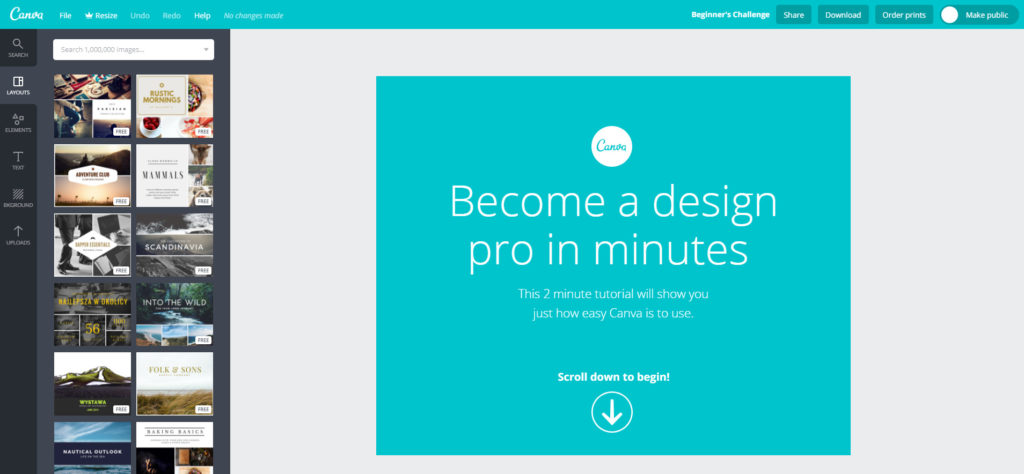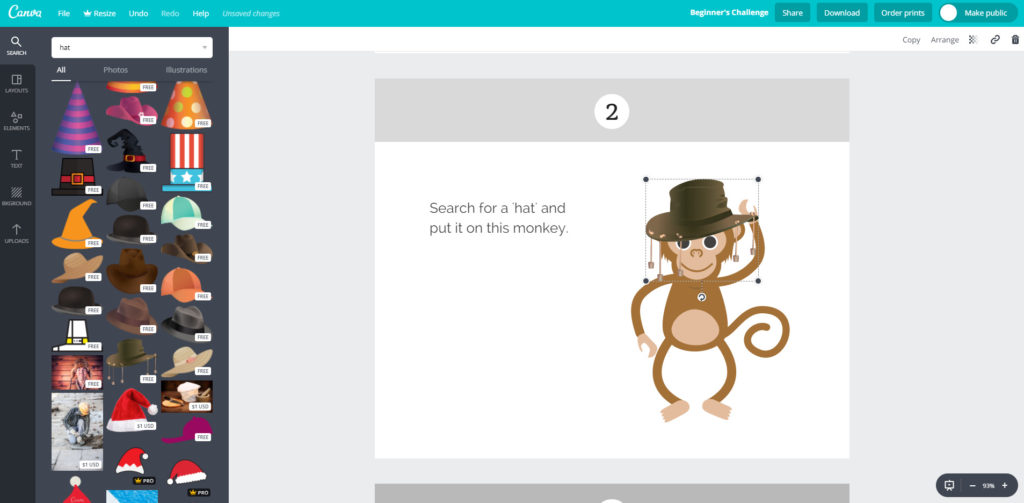Effort. We’re taught to praise it, get really good at avoiding it, and really, would rather do without it. Effort is hard and uncomfortable. As human beings, we’ve designed incredible digital tools to reduce effort as much as possible. Today, “user-friendly” isn’t just a selling point anymore, it’s become a basic expectation among customers – to the point that if a task isn’t intuitively easy to complete, consumers will drop the product and go elsewhere.
Effort is a big deal.
So why are most companies not measuring customer effort, or only relegating it to a customer support metric?
What is Customer Effort Score (CES)?
Customer Effort Score (CES) is a newer metric originally developed for Customer Support. In that context, it measures customer service satisfaction by asking customers “How easy was it to get the help you wanted today?” That is valuable information for your Support department. But Customer Success and Product Development departments have been latching onto the idea for so much more.
The core CES question is: “How much effort did this task require to complete?” – typically on a scale of 1-7. And that question, followed by an open-ended “Care to tell us why?” question, can be used in a number of ways to yield more relevant feedback from customers on numerous fronts.
Customer Success and Product Development teams in particular have been adding CES to their customer journey metrics to get feedback on onboarding and ease of feature use.
[ctt template=”3″ link=”1b54y” via=”no” nofollow=”yes”]”Anytime you have a workflow you want a customer to complete, #CES is a great question to ask.” – Jessica Pfeifer, Chief Customer Officer, Wootric[/ctt]
How Product teams use CES to improve UX & feature adoption
Customer Effort Score fits in seamlessly with Product goals because user experience (UX) and user interface (UI) depend largely on ease of use. Product teams are starting to use CES to get feedback on how well the UI supports new feature adoption and to identify moments where customers begin to feel frustrated and lost.
Frustration is an emotion that is closely linked not only to churn, but to a decreased rate of customer advocacy.
“The revenue impact from a 10% improvement in a company’s customer experience score can translate into more than $1 billion.” – Forrester
“Frustration metrics” like rage clicks, error clicks and form abandonment are also useful to track, and can alert dev teams to issues they may not have expected, but adding CES to the mix can shed more light into just how hard customers perceive tasks to be. And with an open-ended follow-up question, they can even tell you why. When 40 to 60 percent of software users open an app once – and never log in again – anything that reduces friction during those early critical stages will have major impact.
Canva, a design tool for non-designers with a freemium sales model, has one of the smoothest onboarding sequences, which begins with a 2-minute tutorial that shows users the value they’re about to get while giving hands-on instruction on using the tool. Instructions ask users to complete fun design exercises, like putting a hat on a monkey or selecting different layouts and backgrounds, which builds users’ confidence.
SaaS guru Lincoln Murphy says, “The first in-app experience your customer has with your product sets the tone for your relationship, and if it’s confusing, overwhelming, or otherwise puts up barriers to achieving success (or at least recognizing the value potential of your product, you’re in trouble.”
Canva may hit this out of the park, but for businesses struggling with smoothing out their onboarding flow, CES surveys – especially those that can be deployed while the users are in the app – becomes tremendously valuable.
But it’s not just about reducing friction and frustration – retention really is about ease. A Customer Contact Council survey of more than 75,000 consumers found that the most important factor in customer loyalty was reducing effort – defined as “the work they must do to get their problem solved.”
How Customer Success teams use CES to reduce churn
Customer Success managers know that one of the most important purposes of onboarding is getting the customer to experience value from the product – as soon as possible. This has it’s own metric, called “time to first value,” and the shorter it is, the more likely the customer will be to continue using the product.
CES for onboarding
CES now helps Customer Success keep a pulse on the onboarding experience of each new customer. The customer onboarding experience in Enterprise SaaS can involve training and implementation advice delivered by Customer Success Managers, in addition to the elements like videos, documentation and walk-throughs in the product itself. Unfortunately, “the seeds of churn” are sown if that process is painful.
Sarang Bhatt, Customer Success Manager at Wootric uses Wootric’s own CES survey to assess the onboarding process. “I find it very useful. We may not get a 7 every single time, but when we do miss the mark, we can close the loop with the customer and improve our processes for the next cycle. This is all because we have proactively solicited honest feedback via CES. Customers see a CES survey before NPS, so it gives us a chance to learn whether we are on track and make adjustments.”
CES for monitoring customer hand off from Sales to Success
Customer Success teams are also using CES even earlier in the customer journey to measure the ease of transition between Sales and CSMs.
One of the most common causes of frustration for customers is answering questions asked by Sales, only to have to repeat their answers once they’re handed to a Customer Success Manager. The interdepartmental communication ball tends to be dropped during the handoff because customer information is siloed by department instead of shared freely. Customer Effort Score serves as an alert when these types of communication failures affect UX
In fact, Customer Success can use CES to monitor many (if not every) success milestone to see how easily customers achieved them – from the customers’ perspectives. Mapping CES onto the customer’s journey by checking in at success milestones effectively transforms CES into part of the overall customer health score every CSM should be tracking.
Not familiar with customer success milestones? These are often a checklist of tasks your customers must complete to use your product successfully and get closer to achieving their ideal outcomes – what they really want from your product. You can chart them out visually in a customer journey map.
CES for Advocacy
Using CES in customer success has another benefit: advocacy. Users are more inclined to become brand advocates – sharing positive reviews publicly – after positive support experiences. So an in-app CES question that follows high ratings with a timely advocacy ask can help spread brand awareness.
How Customer Service & Support use CES
CES surveys are most often deployed via email after customer support interactions. A user has a question, contacts customer support, receives an answer, and is then asked to score the interaction based on ease.
Why ease? Because research shows that the most important attribute of satisfaction is ease, which makes it the most logical metric to use instead of, or in addition to, other satisfaction metrics like length of wait time or even resolution of the problem. The CES question gets straight to the heart of whether the customer service experience increased satisfaction.
Don’t throw CSAT away though – customer satisfaction metrics provide broader feedback that is still extremely useful.
What to do if CES is low
What if the rating isn’t high? Close the loop! Put a process in place, or use a software platform like Wootric, that takes less than ideal customer effort scores and allows you to close the loop with the customer by reaching out to them individually or triggering appropriate automated responses. Take action — create a cross-functional team to review feedback and prioritize actions you can take that will ease the pain and create a better experience for your customers.

As you track CES over time, you’ll be able to see the results of your efforts in the score and in your customer retention numbers as well!
Sign up today for free Customer Effort Score feedback with InMoment.






